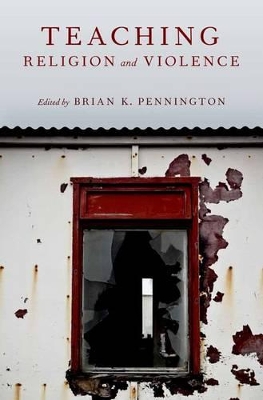AAR Teaching Religious Studies
1 total work
Teaching Religion and Violence
Published 27 April 2012
Many people now see religious violence as one of the defining characteristics of the modern world. Instructors are often asked about it in their courses that deal with religion. Classroom discussion of violence committed in the name of religion can either open the door to a more subtle appreciation of complex and divisive social realities or allow students to display the kind of ignorance, prejudice, and recalcitrance that can derail critical analysis. The etiology
of religious violence requires the kind of careful distinctions that instructors must work hard to communicate even in the best of classroom circumstances. Teaching Religion and Violence is designed to help instructors to equip students to think critically about religious violence, particularly in the
multicultural classroom. The book is organized into two sections. The first, "Traditions," addresses topics and methods appropriate for teaching violence in particular religious traditions. Each essay provides a solid starting point for the instructor developing a new course on violence in one tradition. The overarching aims of the second section, "Approaches," are to suggest alternative rubrics for initiating or furthering discussion of religion and violence and to aid instructors in
demonstrating the wide applicability of the questions and concepts developed here. The volume as a whole and each of the essays is firmly grounded in the theoretical literature on religion and violence, in the theory of pedagogy, and in the collective experience of its authors.
of religious violence requires the kind of careful distinctions that instructors must work hard to communicate even in the best of classroom circumstances. Teaching Religion and Violence is designed to help instructors to equip students to think critically about religious violence, particularly in the
multicultural classroom. The book is organized into two sections. The first, "Traditions," addresses topics and methods appropriate for teaching violence in particular religious traditions. Each essay provides a solid starting point for the instructor developing a new course on violence in one tradition. The overarching aims of the second section, "Approaches," are to suggest alternative rubrics for initiating or furthering discussion of religion and violence and to aid instructors in
demonstrating the wide applicability of the questions and concepts developed here. The volume as a whole and each of the essays is firmly grounded in the theoretical literature on religion and violence, in the theory of pedagogy, and in the collective experience of its authors.
